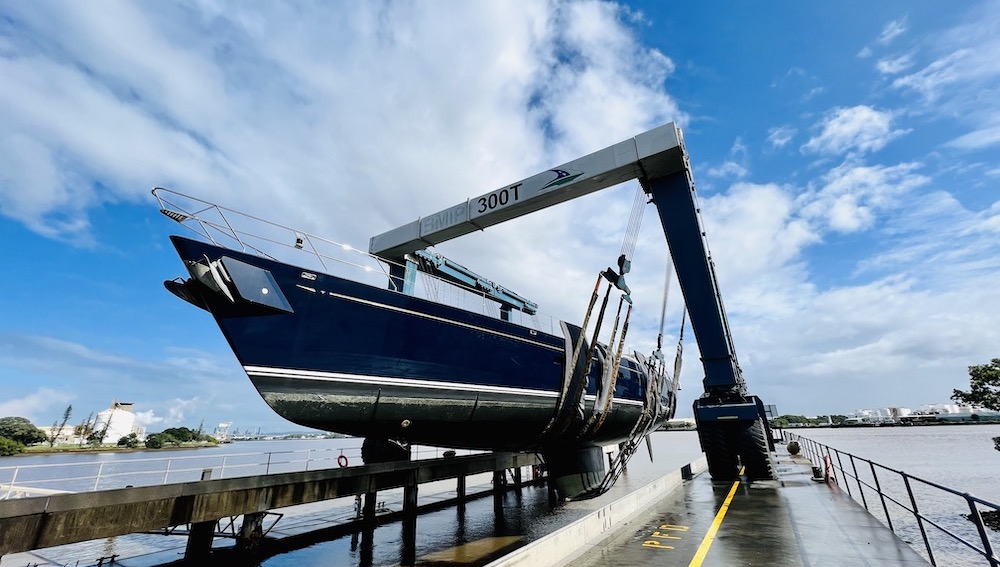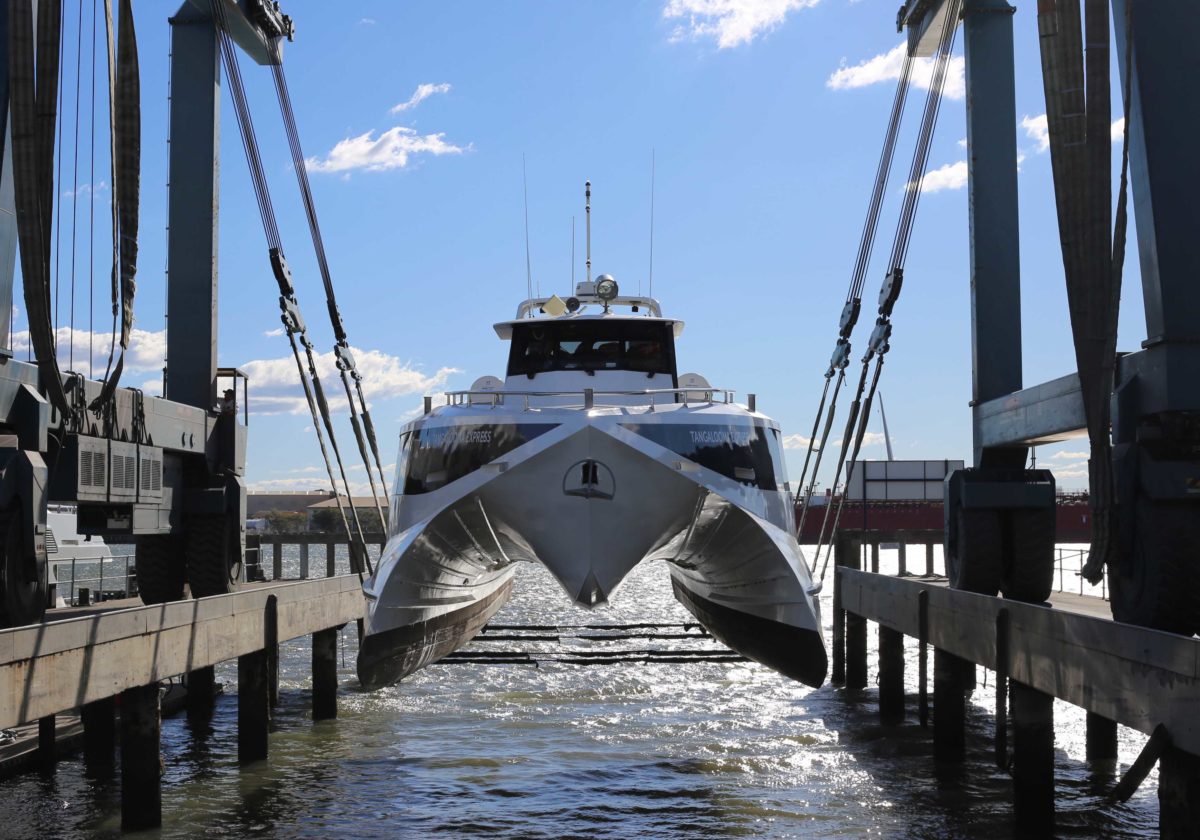Leading Brisbane shipyard, The Yard Brisbane, has welcomed the arrival of its’ first international superyacht since Australian borders reopened to the world.
Arriving to Australian shores and hauling out in May, the 17-year-old Dutch-built Royal Huisman superyacht S/Y Antares is a long-awaited scene for the multitude of marine industry experts working onsite at the shipyard in Hemmant on the Brisbane River.
The Yard Brisbane International Development Manager Mark Phelps said that Brisbane shipyards are more frequently on the radar of international superyachts owing to ongoing development and increasing capabilities.
“The vessel wanted to have this work completed in Australia or New Zealand after encountering some challenges elsewhere. They last refit here in 2019 and it is a pleasure to have them back. This confidence in the Australian marine industry and our labour force is particularly good to witness in a post-COVID world,” said Mark.
The Yard Brisbane worked with yachting agent Carrie Carter from Carter Marine Agencies, the collaborative effort providing the best solution for Antares to return to Australia.
Captain John Van der Straaten said that they were more than happy to return to Brisbane, for the quality of work, facilities on hand, and the weather.
“We basically had, for the work that we wanted to do – especially with the rigging – only two options to get the best job done, and that was either Auckland or Brisbane.
“The crew had a good experience here last time, so we were quite happy to come back, and Brisbane is a great location because of its proximity to the Indo Pacific,” said John.
The availability of The Yard Brisbane’s large refit sheds also provides peace of mind for John, as works can continue unbeholden to the weather and with ample space to work in and set up rigging.
“Being able to get into the shed was great, that’s been a big plus, and all the major work we wanted to achieve is getting done properly and on-schedule,” he said.
The program of work involves many of The Yard Brisbane’s in-house project team, as well as onsite tenants and contractors, including GT Mac, RL Marine and Finishline Paint.
“We’re servicing the rigging, painting the mast, Lloyd’s survey, and maintenance on the shafts, sandblasting on the stern tube, anchor chains and anchors and regalvanising.”
Some major work is being done on their Caterpillar engine and generators, including a 10,000-hour service with bottom-end rebuild and cylinder removal.
The Yard Brisbane’s shipwright and fit out team are completing rudder and interior works including carpentry, varnish, and painting.
Currently, sanding is being done in preparation to paint the topsides, a decision brought about by the convenience offered by being in the shed.
“When we leave here, we’re not going to really stop for any major jobs until the end of 2024. We like to get as much done as we can in one block,” said John.
For local accommodation, the crew has taken a couple of short-term rentals in Wynnum and Manly, and after a bit of a wet start, Brisbane winter has turned it on for a great refit period.
“Other than the large amount of rain when we first arrived, the weather has cooperated, so it’s been a very nice stay.”
The crew have enjoyed being on dry land again and enjoyed the benefit of catching up with other crews from the six other superyachts that have been at The Yard Brisbane during their refit period so far.
They have been sharing the hardstand with superyachts M/Y Glaze, M/Y Mischief, M/Y Royale X, M/Y The Star, M/Y Tango, and a further 55m motoryacht undergoing a six-month long refit.



